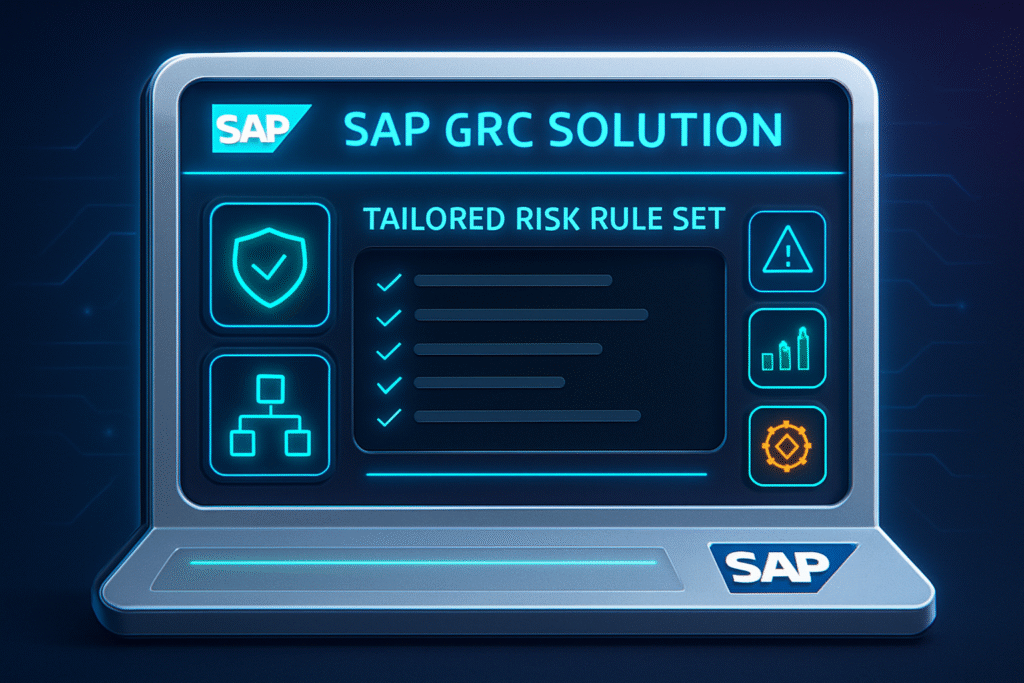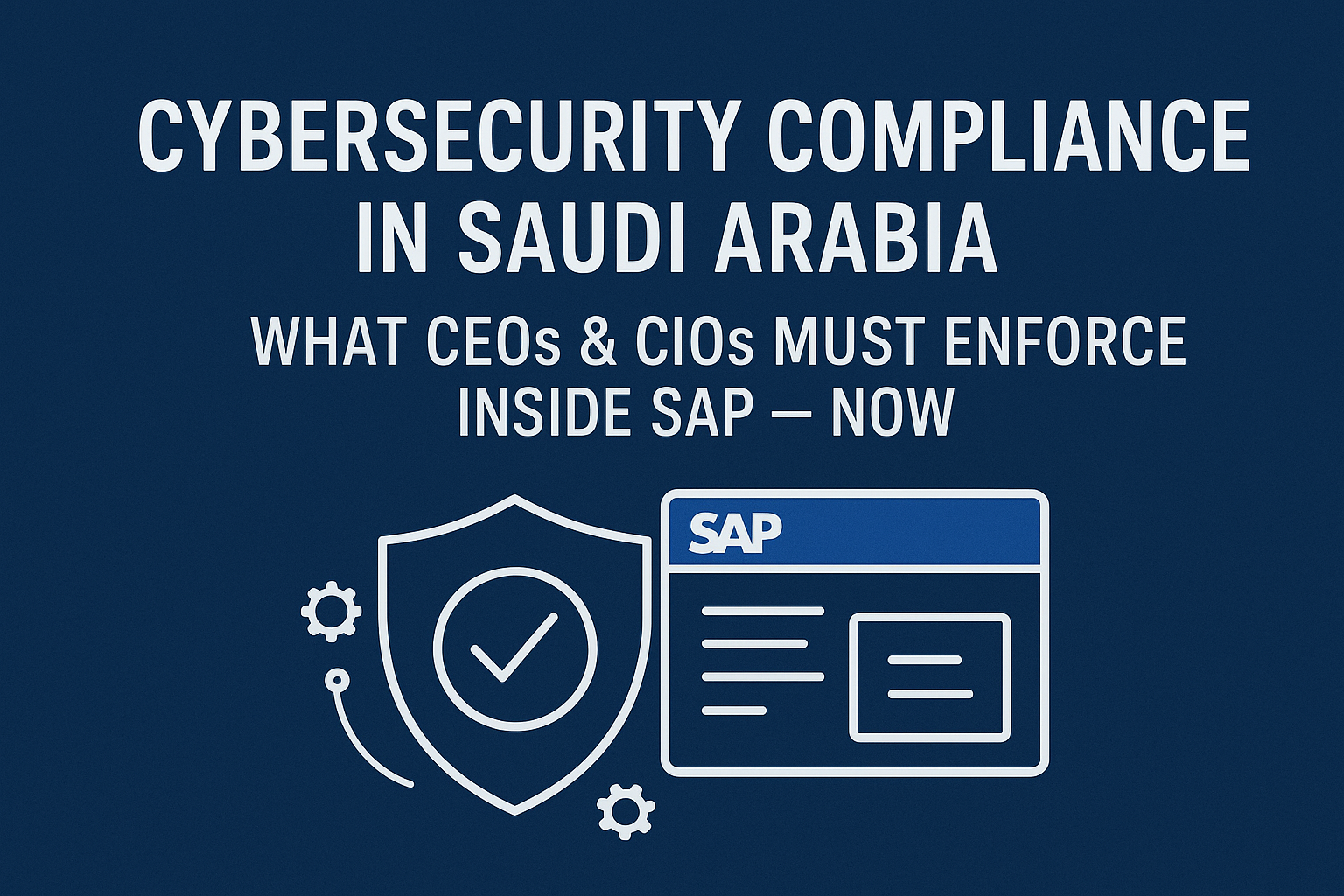In complex digital environments, robust governance, risk and compliance (GRC) frameworks have become foundational to efficient operations and strategic growth. Across industries—whether automotive, banking or pharmaceuticals—businesses face mounting regulatory requirements, ever-present security threats and internal operational risks. SAP’s GRC platform offers powerful capabilities to address these needs, but off-the-shelf features frequently miss the mark for organizations dealing with unique risk profiles and compliance demands. This is where custom risk rule sets become essential, transforming standard GRC applications into precise, tailored engines driving compliance and proactive security.
The Complexity of Modern SAP Environments
The SAP landscape today reflects years of business transformation, acquisitions and diversification. Many organizations run hybrid setups that blend legacy systems with cloud-based innovations, requiring intricate integrations and highly granular permissions. With this complexity comes a broader risk surface: Controls must now anticipate not only external attacks but also internal threats such as excessive access privileges, conflicting roles and process misalignments. Regulatory frameworks like GDPR, SOX and ISO 27001 deepen the challenge by mandating exacting audit trails, fast reporting and evidence of continuous risk management. For companies employing hundreds or thousands across geographies and departments, generic controls often lack the nuance to protect sensitive data, ensure compliance or adapt to business-specific workflows.
Why Go Beyond Standard GRC Rule Sets?
Default rule sets offer a functional baseline, addressing common access risks and process controls. However, no two companies share the same risk landscape. Factors like customized business processes, industry-specific compliance requirements and organizational culture mean that what suffices for one business exposes another to costly gaps or inefficiencies. By building custom risk rule sets, organizations infuse their GRC solution with intimate knowledge of their workflows, prioritizing risks that matter most to them and filtering out irrelevant noise. This approach supports a more meaningful and manageable compliance program and sharpens internal monitoring. As a result, teams are empowered with actionable insights instead of overwhelming alarms, allowing focus on remediating material risks rather than administering blanket controls that slow business down.
Core Elements of Custom Risk Rule Sets
The design of a custom risk rule set starts with a detailed understanding of business operations, compliance mandates and threat vectors. At the heart of these rules are segregation of duties (SoD) matrices that reflect not only general best practices, but also the unique combinations of tasks that could be problematic in a given organization. For example, a global manufacturer might flag unusual export transactions as a high-risk scenario, while a pharmaceutical firm may prioritize controls around clinical data access. Beyond SoD, custom rules encompass rules for privileged access, cross-application integrations, change management and exception handling. Input from compliance teams, audit findings and frontline business users drives continuous refinement, ensuring that GRC remains both effective and relevant. Technology partners can play a pivotal role in translating operational realities into technical rules that embed seamlessly within SAP environments.
The Impact of Custom Rule Sets on Compliance and Efficiency
Custom rule sets drive compliance by turning generic reporting into relevant, audit-ready documentation. Tailored controls map exactly to audit requirements, making it easier to produce evidence and justify remediation decisions to external auditors. This accuracy minimizes false positives and reduces the manual effort required to review access logs or incident reports. Operationally, custom rules streamline user provisioning, align authorizations with real job functions and prevent the accumulation of excessive rights. By enforcing only those controls that fit actual business risks, organizations gain efficiency without sacrificing security or regulatory alignment. Over time, the data collected from these rules feeds continuous improvement, supporting automation and advanced analytics that make risk monitoring faster and smarter.
Implementing GRC Solutions with Custom Risk Rule Sets
The implementation of a GRC solution tailored with custom risk rule sets demands collaboration between business leaders, IT security teams and industry experts. The process typically begins with risk assessments and workshops designed to map business processes to system activities and user actions. Specialists leverage SAP tools and methodologies to build, test and optimize new risk rules aligned with audit and compliance goals. Automation tools streamline integration, management and reporting, allowing organizations to adapt their rule sets as their business grows or regulations shift. Feedback loops and regular reviews ensure that the risk landscape remains current and that the GRC solution evolves in concert with both internal and external drivers of change. Partnering with providers skilled in both SAP technologies and compliance standards ensures best practices are upheld while delivering a tailored approach that genuinely supports the business.
Navigating Common Challenges in Rule Customization
Building and maintaining custom risk rule sets is not without its challenges. One recurring issue is scope creep: As businesses uncover new risks or face new regulations, the temptation to create sprawling rulesets can reduce focus and add complexity. Clear governance and prioritization are essential to keep efforts targeted on what matters most to risk outcomes. Another common hurdle involves translating business requirements into technical rules that function smoothly within SAP. This bridge often requires strong SAP skills and a nuanced grasp of compliance requirements, particularly when integrating across modules or legacy systems. Ongoing education, cross-functional teams and collaboration with experienced advisors help streamline this translation, ensuring that customizations do not inadvertently introduce blind spots or system performance impacts. Finally, maintaining audit-readiness through continuous updating of rules and documentation is vital to staying effective and passing scrutiny from auditors or regulators.
Looking ahead, the trend in GRC is toward greater automation, self-learning systems and predictive analytics. Custom risk rule sets are evolving to reflect not only static business logic but also data-driven insights about how risks emerge and propagate in real time. Integration with advanced monitoring and analytics tools allows continuous fine-tuning of controls, empowering GRC teams to anticipate new threats and regulatory requirements. The flexibility offered by well-implemented custom rules today lays the foundation for adopting these advanced techniques, positioning organizations to remain secure and compliant as both their business and the regulatory landscape changes. Whether managing a regional supply chain or supporting distributed operations worldwide, tailored GRC solutions built on custom risk rules deliver clear benefits in risk reduction, operational agility and audit confidence. As technology and risks keep changing, this approach will be indispensable for those seeking not just compliance, but genuine assurance that their operations are protected and future-ready.





